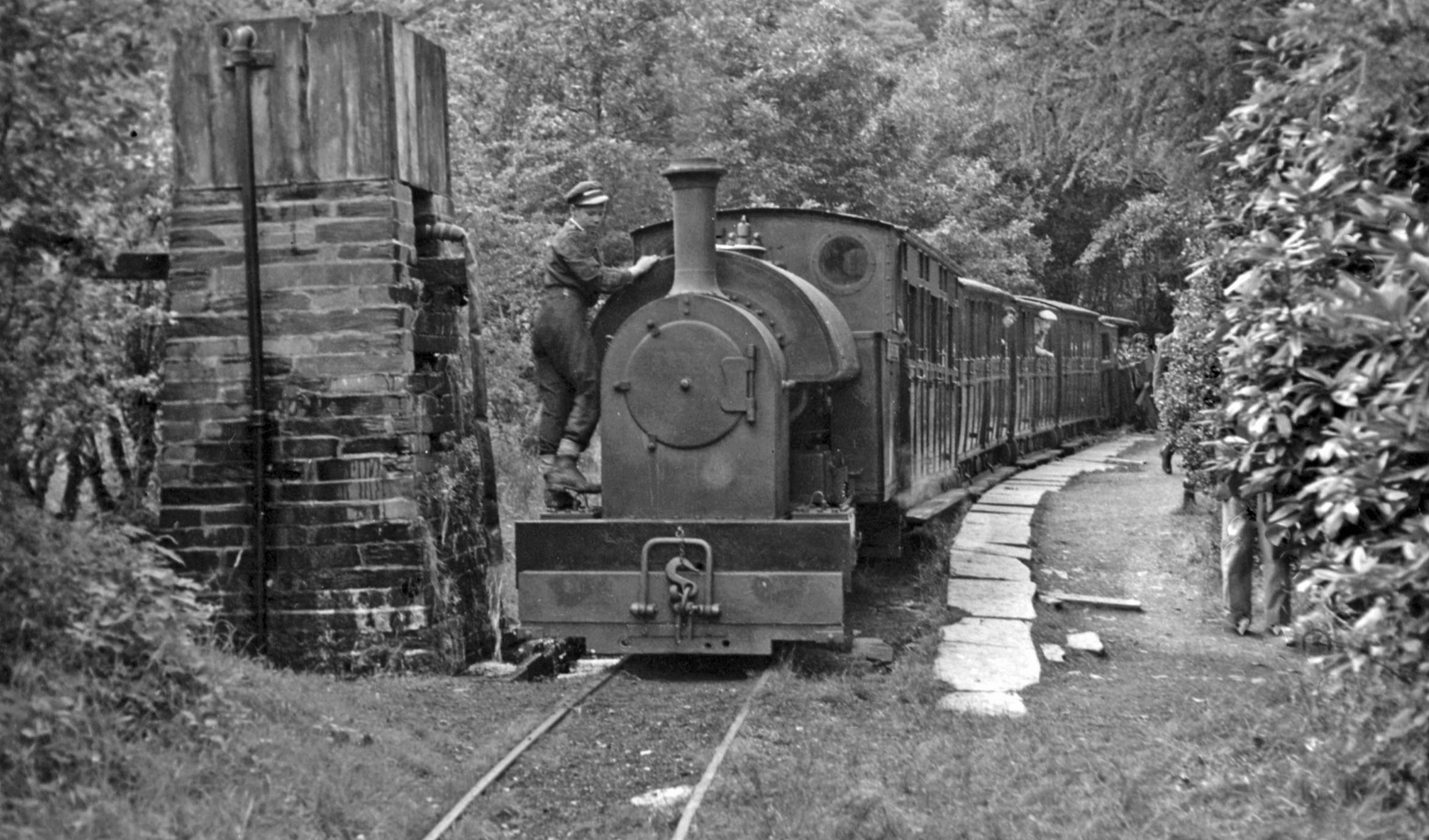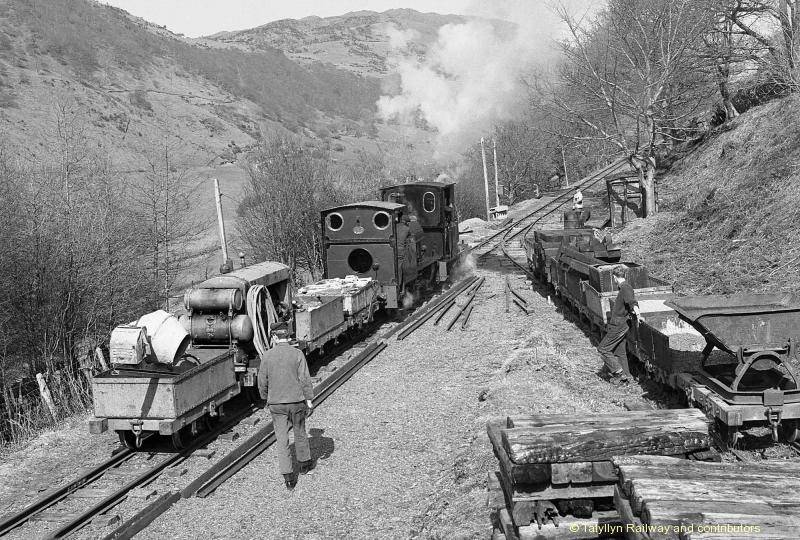The TRPS faced two pressing problems. Having an engine to work the train and track to run it on. Two locomotives were purchased from BR for £25 each. They had run on the neighbouring Corris Railway. The locos retained their Corris numbers, 3 and 4, and were named “Sir Haydn” and “Edward Thomas” respectively. (Edward Thomas, latterly manager, had joined the railway in 1897 and retired in 1950, though after preservation he remained a director of the company until 1967, by which time he was 87. He died in 1972.) No.3 was in the best condition but its narrow wheel treads meant it kept derailing and could not be safely used. No.2 Dolgoch, the only workable Talyllyn Railway loco had to work the 1951 service alone, no mean feat for an 85-year-old engine being hammered over the very poor track. Hunslet Engine Co. generously agreed to overhaul No.4 and for 1952 the railway had two workable locomotives.
An exercise by the Territorial Army in 1953 got the track into a better state and from then on the future of the line seemed more secure. No.3 was usable and a fifth engine, No.6 was donated by a Midland’s company, Abelson & Co., and named Douglas after Mr. Abelson. Additional carriages were obtained from the Penrhyn Quarry Railway and volunteers built bodies for two bogie chassis which had been obtained. Track, rolling stock and facilities were gradually improved and passenger numbers increased year on year. Large quantities of second-hand rail were obtained from a variety of industrial sources, and ex-British Rail sleepers were used, sawn in half. The old shale quarry at Quarry Siding was used to provide a rather poor grade of ballast. The last of the original wrought-iron rail was removed from the mainline in 1968, though the work of track maintenance and replacement goes on. (Today a variety of approved species are used for the mini sleepers; they could be either Angelim Vermelho (Brazilian), Karri (Australian) or Ekki (African), with new or good second-hand rails and granite ballast from a nearby quarry). Another major operation was the repair of a landslip west of Dolgoch, a blocked culvert causing 50 feet of the embankment to collapse in November 1957. Whilst temporary repairs to allow trains to pass carefully were completed quickly, it was late 1960 before the job was finished. In 1957 the BBC visited the railway for live outside broadcasts on two consecutive days. The effect was phenomenal – the number of passengers doubled within two years – but placed a great strain on the railway’s resources. Many more carriages had to be built, and more trains run, to cope.
Passenger facilities had to be improved as well. Wharf station was extensively improved in 1964-65. In 1969 the old waiting shelter at Abergynolwyn was replaced by a new station building providing waiting and refreshment facilities and a booking office. The original TR locos were rebuilt and returned to service and in the winter of 1968/9 additional loops were provided to enable three train sets to be used to cope with the rising passenger numbers.

